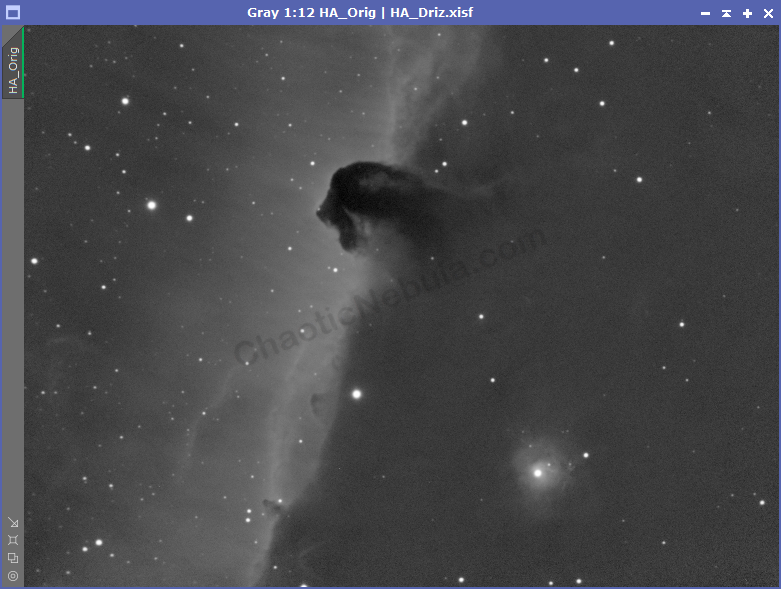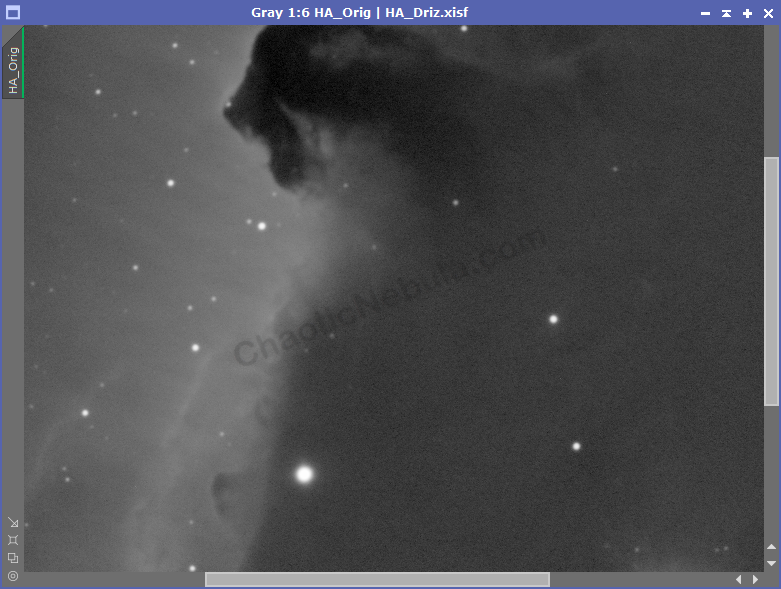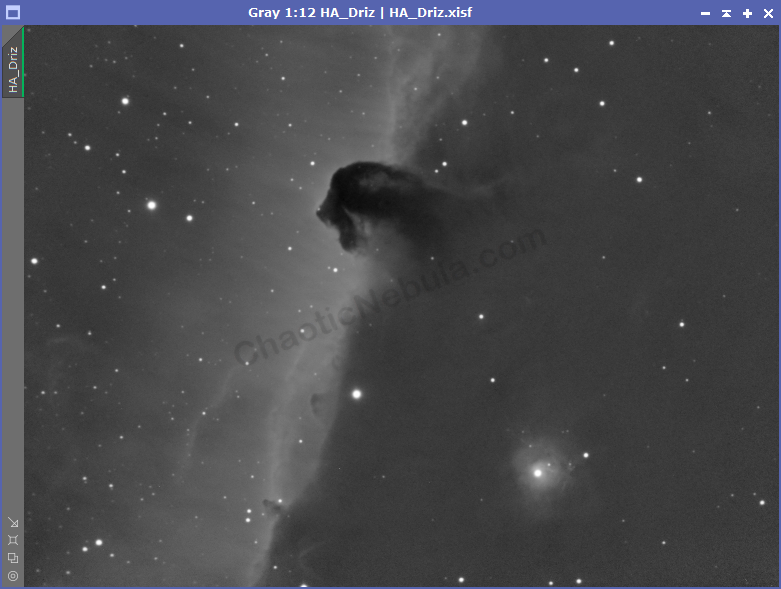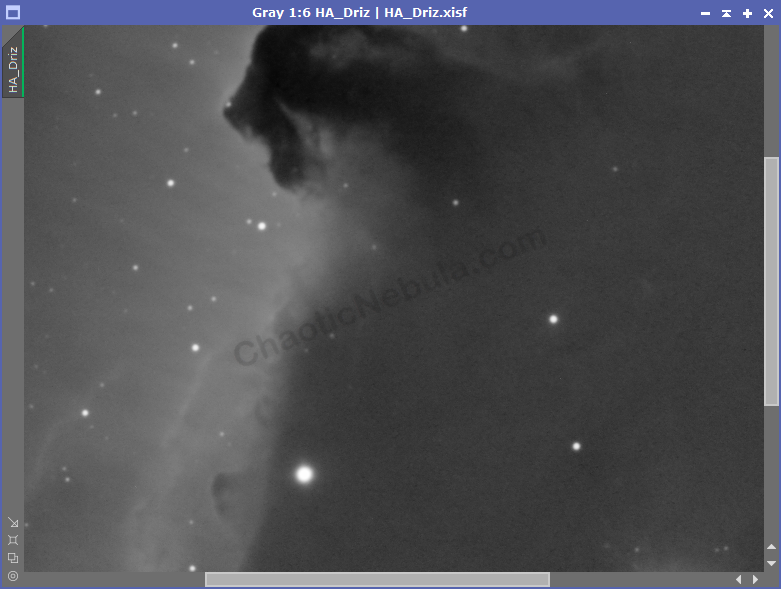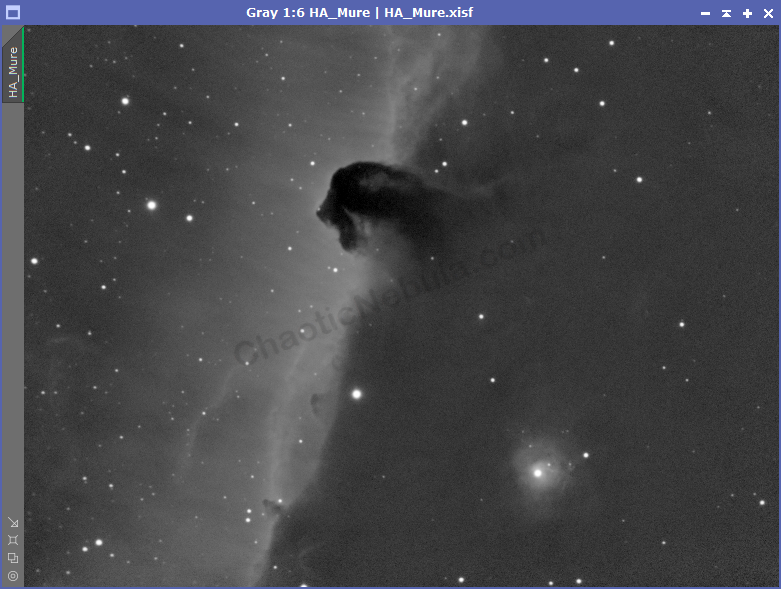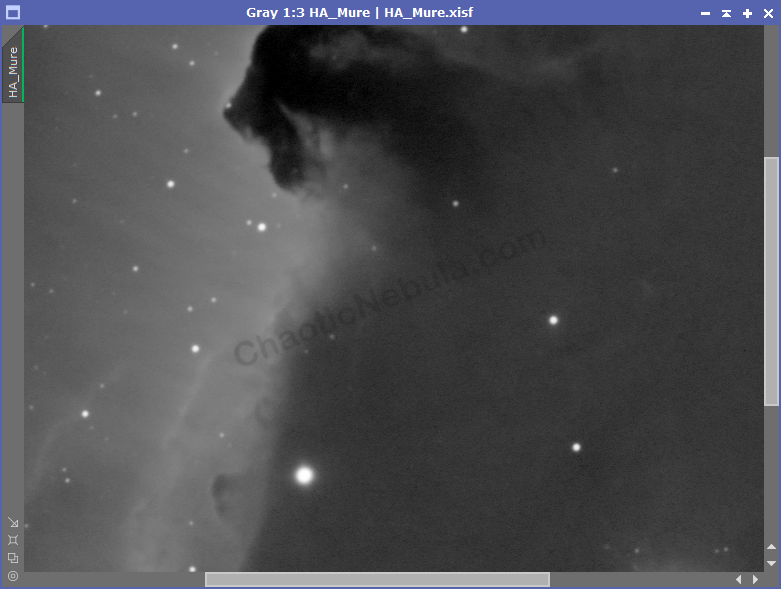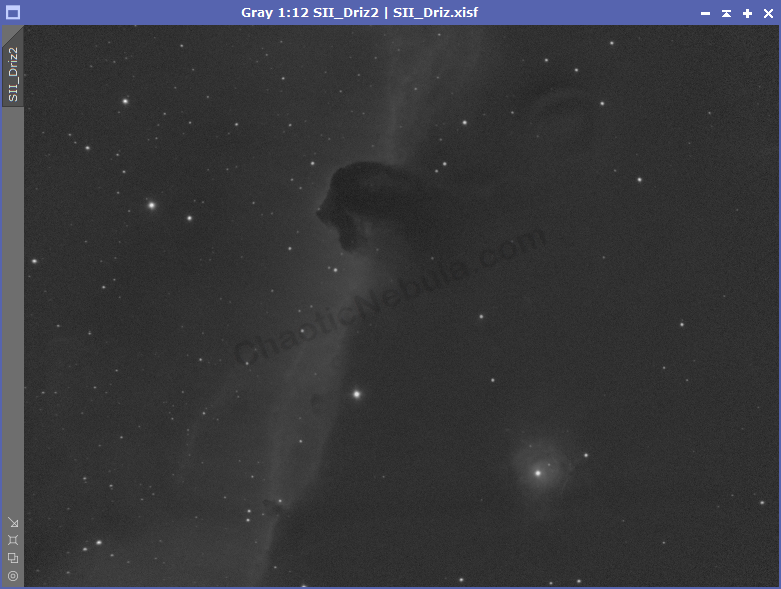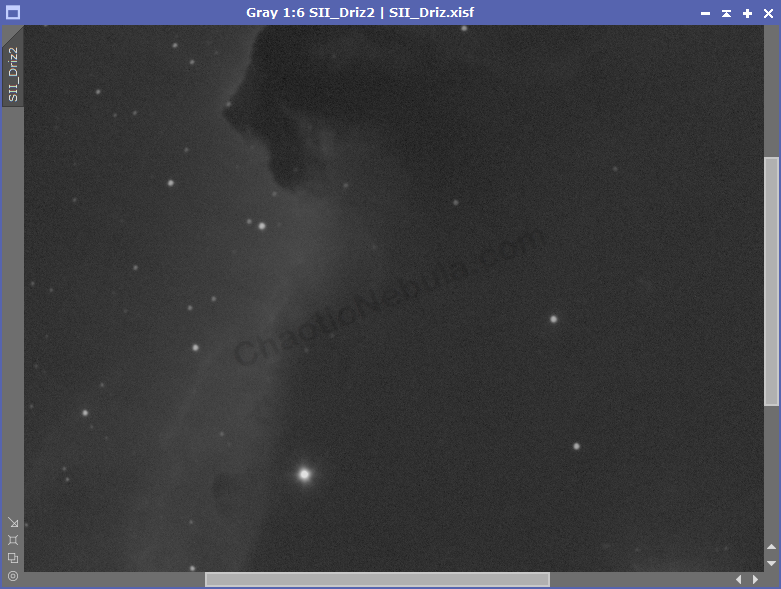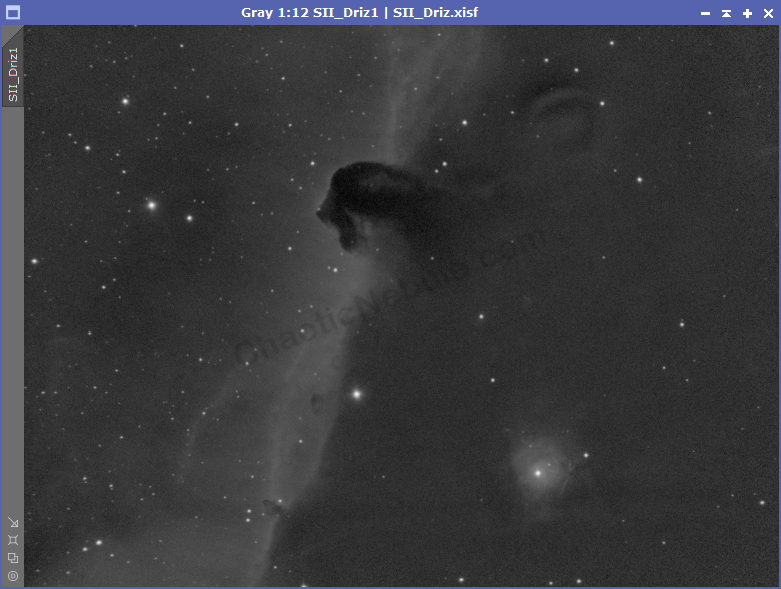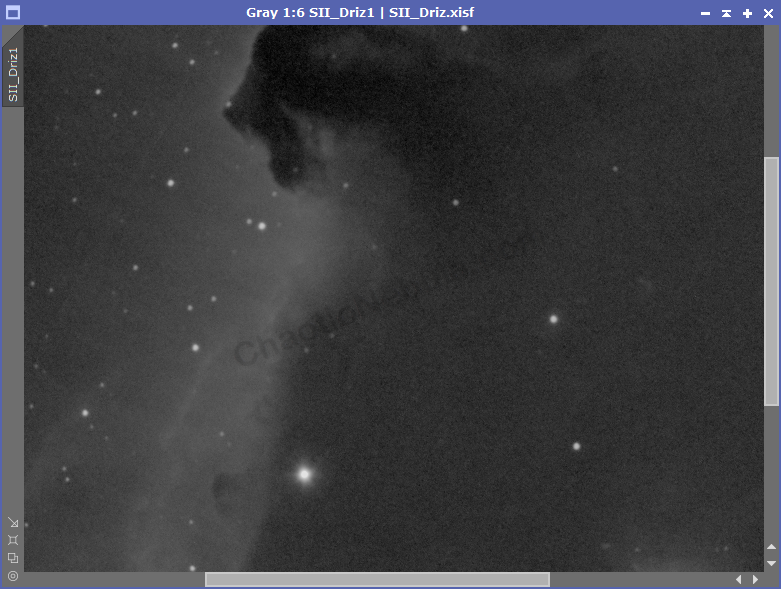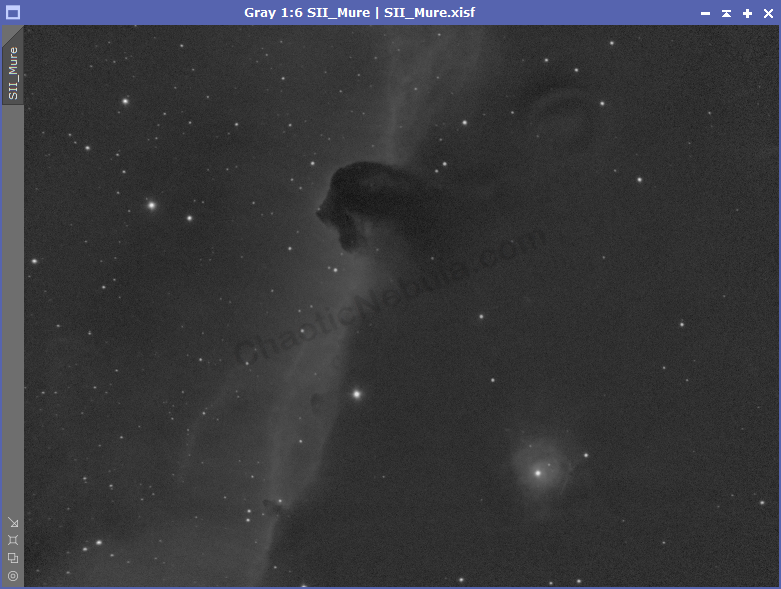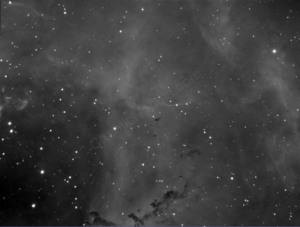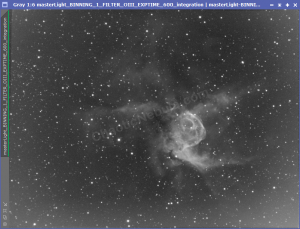The PixInsight Mure Denoise Script does a great job of removing noise from your astrophotography images. However, opting for Mure Denoise means that you are unable to use Drizzle Integration. I believe that a 2X drizzle integration creates a smoother final image.
But instead of doing what I believed to be right, I decided to run a test. I was going to compare what my image would look like with my Mure Denoise Script process vs the combination of TGV Denoise and Multiscale Linear Transform combination.
HA Filter
My first test was using the hydrogen-alpha image for the Horsehead nebula. Built by integrating 18 frames at 600 seconds each, the HA image already as minimal noise.
So which one is better? In this case, the Drizzle integrated image with TGV Denoise and Multiscale Linear Transform looks slightly better than Mure Denoise.
However, the Hydrogen-alpha images usually have a strong signal, helping to have less noise in the original image. What happens with the same analysis where a starting image has more noise?
SII Filter
I decided to rerun the same test but with my Sulphur-II image of the Horsehead nebula. This particular image was built by integrating 12 frames at 600 seconds each. The baseline image has much more noise than my HA test. Will the results be the same?
With the SII image, which started out with high noise, the Mure Denoise script did a better job at noise reduction.
Conclusion
After looking at the results, I’ve determined a few things:
- For baseline images with low noise (like Hydrogen-alpha), I will continue to use Drizzle Integration, TGV Denoise and Multiscale Linear Transform. Because of the strong signal, using Drizzle integration will help produce greater levels of detail in the final image.
- For baseline images with high noise (like Sulphur-II), I will start using Mure Denoise, as it produces a better final result.
- For Oxygen-III, Luminance, Red, Green and Blue baseline images, my decision on which approach to use will be based on the level of noise in the image. Some nebula show strong OIII signal areas, which will often work better with Drizzle Integration.
